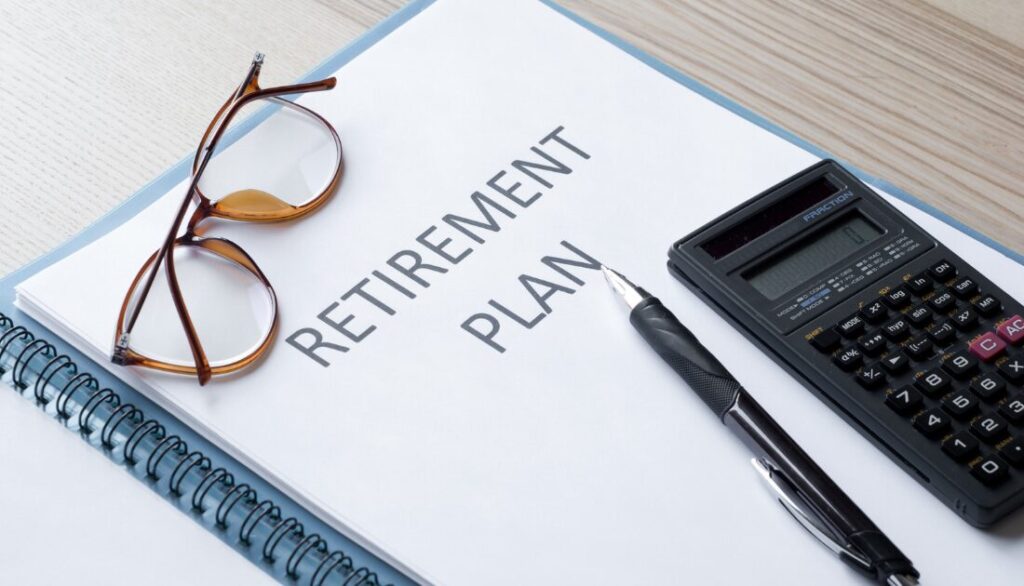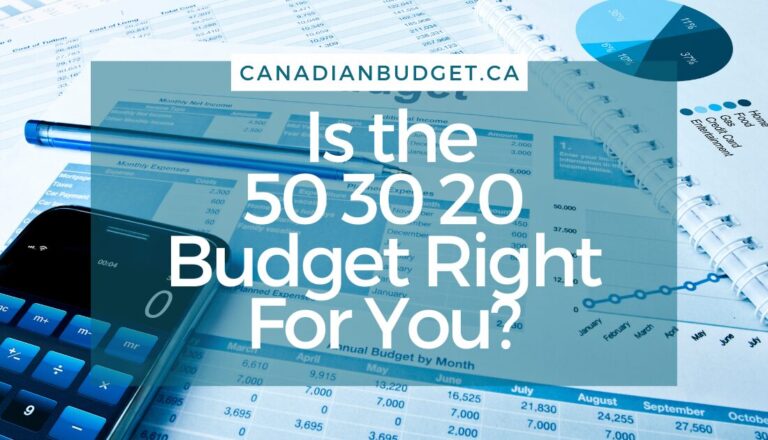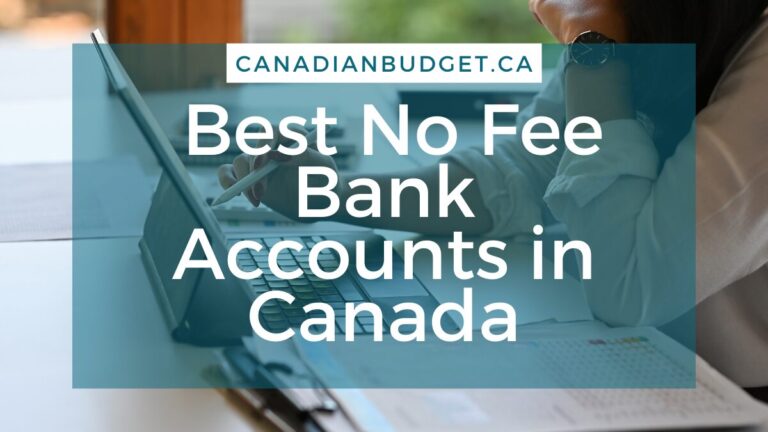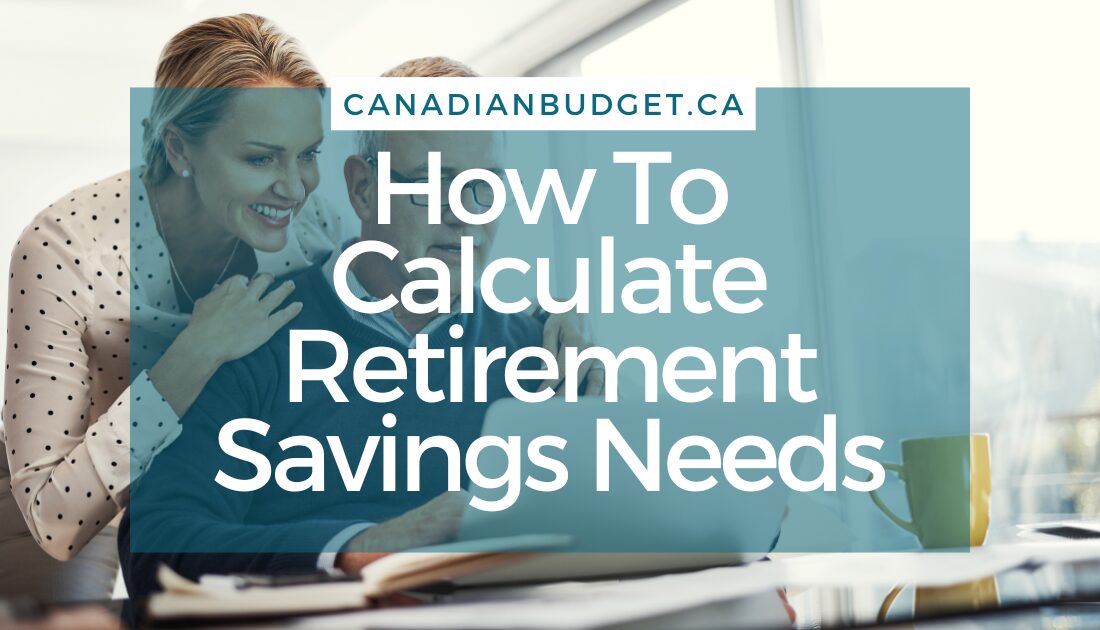How to Calculate Retirement Savings Needs in Canada With or Without a Pension
Table of Contents
ToggleWhen is a good time to calculate retirement savings needs? When retirement may be decades away it’s hard to think clearly about what you actually need in terms of retirement savings. But I would argue, the best time to think about it is when it is decades away, so you have more time to plan and prepare appropriately.
If you have a workplace pension, you may need to save less than your peers without a pension. However, depending on how long you have been in the pension plan, it may or may not cover all of your post retirement needs. So let’s find out how to calculate retirement expenses and make sure our retirement savings plan will help us cover those costs.
What do I want to do in retirement?
Many people focus only on the financial costs of retirement and what they need for retirement savings using only rules of thumb as financial guidelines without really thinking through the life they want to lead in retirement.
Have a sit-down and write out things you think you would like to do if you are no longer working. It might be skiing, traveling, volunteering, or spending time with family. Whatever sounds good to you, write it down.
Think about how spending your time on those activities will make you feel. If you have only ever thought about retirement in terms of money, think more about the retirement you want. I recommend a great book to help you figure out this whole retirement lifestyle thing a little more: Work Optional by Tanja Hester.
Once you’ve sorted out what kind of lifestyle you want in retirement, you can add a few numbers to the equation. You’ll need to determine the costs and expenses associated with your post-work lifestyle. What are you going to spend more on, and what are you going to spend less on?
Some costs will likely go down. By the time you retire, if you are a homeowner, you may have paid off your mortgage or be very close to doing so. If you had kids you were supporting through school, those costs will likely pass by the time retirement is approaching. If you hope to travel much more in retirement, you must increase your travel budget to meet your desired travel frequency and duration. Consider these things and write an estimated annual retirement savings and expense breakdown.

How much am I going to need in retirement?
According to a 2023 report by Deloitte, 68% of Canadians nearing retirement are either “at risk of not being able to financially sustain their retirement lifestyle” (31%) or “will need to rely on public retirement income streams” (36%) to support them in retirement. Planning early for your retirement can help keep you out of this statistic group, and build your retirement nest egg so you can live the post-work lifestyle you want!
Once you know what kind of retirement lifestyle you prefer to create, you can start calculating your retirement expenses and understand how much that lifestyle costs. You can use handy calculators to help you figure out the more complex items including how your pension factors in. But when trying to calculate retirement income in Canada you also need to factor in, OAS, and CPP to your post-retirement finances.
There are some general rules of thumb for retirement savings & planning:
- Depending on what lifestyle you want you need about 8 to 10 times your annual salary saved up to retire (People who follow Financial Independence/Retire Early aim for 25x).
- You would typically need about 70% of your pre-retirement salary to live on in retirement.
The assumptions made are that by retirement, your mortgage would be paid off if you are a homeowner, reducing your most significant expense. Kids have gone through college, and if you were helping them with the costs, those expenses would be gone, but there may be an increase in other expenses like travel, hobbies, healthcare, and more.
Another really great book to help understand planning out your future retirement savings needs is The Rule of 30 by Frederick Vettesse.
Before you calculate your retirement savings and expenses, you must know your present day lifestyle costs to estimate correctly. So, if you have never made a household or annual budget before, it’s time to pull out a pen, paper, calculator, or spreadsheet and start documenting your expenses.
Our Zero-based budget spreadsheet has an annual tracker that helps you keep track of these costs. So bookmark this page and come back to this point once you have a good idea of your expenses—both monthly and annually.
This online retirement calculator can help you assess your post-retirement expenses. It’s a great tool for comparing your current budget with a potential post-retirement budget. In your retirement budget, if you only enter your income from Pension and CPP/OAS, you can get a good picture of how you are going to fare.

When Can I Retire in Canada?
You may be surprised, but when you can retire is not based on your age. I hate to break it to you, but if you hit 65 years old and haven’t saved enough money to support yourself through the next 20+ years of living, you must keep working or drastically cut back your lifestyle to ensure you don’t outlive your savings.
Rest assured, having a pension can put you much farther ahead of others in the retirement preparation game. However, how big a pension you will have when you retire depends on how many years of pensionable service you have under your belt.
Many people with pensions don’t understand their pension’s impact on their retirement timeline and what kind of post-retirement income they will receive.
Next, we will explore some of the steps you can take to find out how much more you may need to save on your own if you have a pension.
If you think you will have a surplus of income over your expenses at the regular retirement age, you should look at what will change if you pursue an earlier retirement. Your pension amount WILL be less, as you will have fewer years of service to build up your pension; therefore, retirement benefits will be less.
However, if you have also built up a substantial nest egg through your investment accounts, this may be an option to consider.
How much MORE do I need to save if I have a pension?
Knowing how much more someone needs to save if they have a pension is one of the questions that will never stop coming up. There are several steps and considerations to this question. Here’s a step-by-step guide to help individuals determine their personal savings goals.
The basics information we need to answer this question is as follows:
- What your desired retirement life looks like
- How much a year in that retirement is going to cost you
- Whether your Pension and CPP/OAS are enough to cover your annual or monthly expenses in retirement
Subtracting your annual expenses from your pension income will identify if you have a retirement savings gap. If there is a gap, you need to fill that with your savings and investments to have enough income to cover your post-retirement expenses.
Assess your non-pension savings and investment accounts, such as TFSAs, RRSPs, and taxable accounts.
If you aren’t sure what those are, you may want to check out my Investing course for Canadians. Also, consider any other income you may receive in retirement, such as from rental property or dividends. Remember that the average return on the stock market is about 7% per year, so don’t forget to factor that investment growth into your projections.

Retirement Calculators
Many retirement calculators are available to help you determine the various components of your financial picture. Another fantastic tool from the Ontario Securities Commission is the Retirement Cash Flow Calculator. It will help you make income, investment, and retirement savings projections.
This Retirement Cash Flow Calculator accounts for your pension in their calculations and helps you understand the bigger picture of Pension + CPP + OAS + Savings to see how things are stacking up for you.
Here is what you need to know or have on hand to use this calculator:
- Your current Income
- Your current Savings & Investments
- Your desired retirement age
- Annual CPP estimate if eligible $8,736 (Average CPP Monthly Payment $728)
- Annual OAS Estimate if eligible $7,992 (Average OAS monthly Payment $666)
- Annual Post Retirement Pension Income (Grab this from your Pension Annual Statements or calculators)
- Estimated retirement annual expenses
- Any one-time expense estimates (e.g. car/home purchase etc.)
If you use a calculator that does not include inputs for OAS and CPP, add them as other post-retirement income sources.
9 Steps to Calculate Retirement Savings In Canada
Remember—online tools can only go so far. The best thing to do engage a financial planner who specializes in retirement planning and understands pensions.
A financial planner can assess your specific situation, review your numbers, and interpret those complex pension statements for you. You can find an advice-only or fee-based financial planner in Canada.
1. Understand Your Pension Benefits if you have one:
Start by understanding the specifics of your employer-sponsored pension plan, including the type (defined benefit or defined contribution), contribution amounts, employer contributions, vesting period, and retirement age for full pension. You’ll need to know how much you can expect to receive from your pension after retirement.
2. Set Your Retirement Goals:
Determine your desired retirement lifestyle, including estimated expenses for housing, healthcare, travel, and other living costs. Be realistic about your expectations and consider inflation over time.
3. Calculate the Pension Income Gap:
Subtract your estimated annual pension income from your annual retirement expenses to give you an idea of the income gap you need to fill through personal retirement savings.
4. Factor In Other Sources of Income:
Consider other sources of retirement income, such as government pensions (like the Canada Pension Plan or Old Age Security) if you will qualify, rental income, investment income, or part-time work. Subtract these income sources from your income gap to determine the remaining shortfall.
Do note that if your income is over a certain threshold, the government will claw back the OAS payments.
5. Assess Your Existing Savings and Investments:
Take stock of your current retirement savings, investments, and other assets earmarked for retirement. Include the balance in your Registered Retirement Savings Plan (RRSP), Tax-Free Savings Account (TFSA), and non-registered investments.
6. Calculate Your Personal Savings Target:
Subtract your retirement savings from the remaining income gap to get the amount you need to save to bridge the gap.
7. Consider Investment Growth:
Your savings can grow over time through investment returns. Your expected rate of return on investments can vary depending on your asset allocation and risk tolerance. Using a retirement calculator or consulting a financial advisor can help you get an accurate estimate of your savings’ potential growth.
8. Review and Adjust Regularly:
Reevaluate your retirement plan periodically, especially when there are life changes (marriage, children, job changes, leaving the pension plan etc.). Adjust your personal savings goals as needed to ensure you are on track to meet your retirement goals.
9. Hire Professional Advice:
If you need clarification on any aspect of your retirement planning, consider consulting with a financial advisor or planner specializing in retirement planning. They can provide personalized help and advice based on your unique financial situation and goals. Hiring a fee based advice only planner cost me around $2,000 CAD, but costs will vary based on provider and services rendered. I feel it was well worth the investment!
Final Thoughts
Remember that retirement planning is not one-size-fits-all, and everyone’s circumstances differ. Pensions can have a huge impact on your retirement savings needs, but knowing if there will be a gap between retirement income and expenses is important to discover.
Having a well-thought-out plan and making adjustments as needed is crucial to ensure a comfortable retirement. Hiring a financial planner can help ensure your calculations and estimations are on track. Its well worth the investment.
More From The Blog...

Saving for Long Term Financial…
Saving for long term financial goals can seem huge and intimidating, That overwhelm can lead to inaction because of decision...
Read More
How To Build Generational Wealth In 4…
How To Build Generational Wealth In 4 Steps Building generational wealth can feel impossible when dreaded financial struggles and living...
Read More
How to Calculate Retirement Savings…
How to Calculate Retirement Savings Needs in Canada With or Without a Pension When is a good time to calculate...
Read More
The S&P 500 Index Demystified: A Beginner’s…
The S&P 500 Index Demystified: A Beginner's Guide The most widely touted advice among financial influencers on the internet is...
Read More
Is the 50 30 20…
This budgeting method, popularized by the book All Your Worth, divides your income into three categories: 50% for essentials, 30%...
Read More
Hotels.com Canada Plus 4 Of…
Learn how combining Hotels.com Canada with one of the 4 Best Travel Credit Cards can Supercharge your stay and make...
Read More
FHSA Canada: Understanding the newest…
FHSA Canada: Understanding the newest tool for homeownership The FHSA in Canada is a new account for aspiring homeowners. Is it...
Read More
3 Top Portfolio Visualizer Tools…
Investors have many tools to choose from when they want to learn about stocks, but what if you also wanted...
Read More
The Best No Fee Bank…
The Best No Fee Bank Accounts in Canada: Say Goodbye to Fees. When it comes to banking, nobody likes to...
Read More
What is moomoo? The moomoo…
Moomoo Financial Canada is a trading platform where you can invest in the stock market. They started in 2018 in...
Read MoreAbout The Author
Jessica Morgan
Jessica Morgan is the founder and CEO of Canadianbudget.ca. She is passionate about personal finance and helping Canadians improve their financial literacy by providing more Canadian focused financial content. A millennial mom of one, she has a burning obsession with all things personal finance.
Jessica has a BA in East Asian Studies from York University and a Masters in Business Administration from Toronto Metropolitan University. She is a career public sector employee with a Hybrid Pension, and an advocate for Canadian women to improve their personal finance knowledge.



